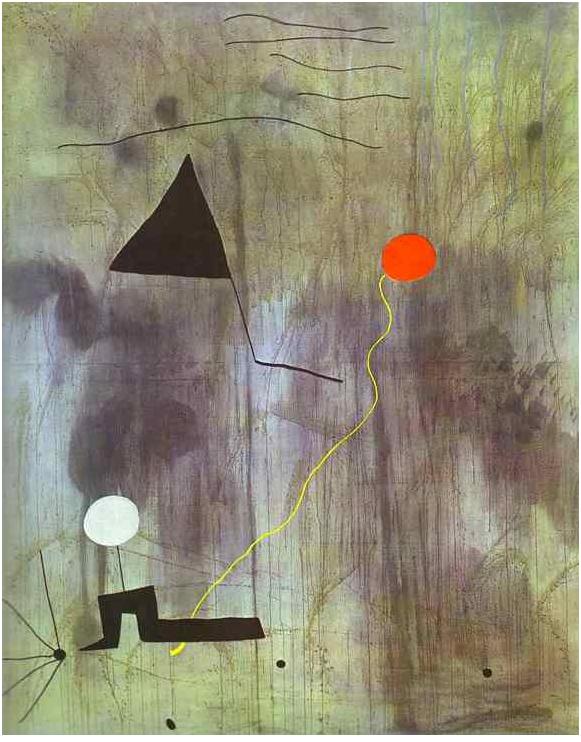Research about Ben Nicholson
I love Cornwall with a passion. For me, if I lived in England, it is the only place to be. All though I never would choose St Ives as an inspiration for me, but I can understand why so many artists find inspiration in the Cornish landscapes; Cornwall it is not just landscape, it has a special atmosphere, it is the people, it is something that you cannot describe in words. I like Launceston. I like people shouting in the streets “Hello Olga”, making me jump each time; where shopkeepers become your friends. A feeling of community that has died in many parts of England.
But, when I first opened the page where it is asked to do research on Ben Nicholson and showed his painting, I could not understand how it is related to the Cornish landscape. Although he said it is, for me it has, at most, the appeal of the landscape of a golf course anywhere in the world. Then I looked on the internet for more paintings by this artist and, unfortunately for me, I did not like any. A lot of them look like students’ work on our forum, where they are criticised for not being very good. So what makes the difference between him and other artists who were not successful? I looked again and found out he was very good manager, I cannot find another word, and he was married with very talented women.
Nicholson was married three times: firstly to Winifred Roberts (married 5 November 1920 at St. Martin-in-the-Fields Church, London; divorced 1938) with whom he had three children, a son Jake in June 1927, a daughter Kate in July 1929 (who later became an artist herself) and a son Andrew in September 1931. His second marriage was to fellow artist Barbara Hepworth (married 17 November 1938 at Hampstead Register Office; divorced 1951) with whom he had triplets, two daughters Sarah and Rachel and a son Simon in 1934 and third to Felicitas Vogler, a German photographer (married July 1957; divorced 1977).
http://en.wikipedia.org/wiki/Ben_Nicholson
As it happens, I know the names of all of these women artists, but never came across his name before.
Does it mean that his name has faded with time?
I looked at his work more deeply and I found one that he painted in a similar style
| |
1932 (painting) 1932
Oil, pencil and gesso on boardsupport: 746 x 1200 mm frame: 800 x 1255 x 60 mm
painting
Presented by Dame Barbara Hepworth 1970

T01189
In 1932, Nicholson visited Paris and saw work by Joan Miró, Alexander Calder and Hans Arp. He described their effect on him as ‘a new freedom … a kind of liberation’.
Incised lines dance into and along the surface of this painting. The lines are fluid, playful and largely non-descriptive (although outlines of bodies can perhaps be read into this painting). Nicholson is occupied here with conveying the painting’s status as a physical object. In discarding the need for representation, Nicholson’s aim was ‘to animate a thing, to create new life by marrying idea to a physical object’. But you can see straight away a strong influential by Joan Miro – if not just a copy of his work.


Although all paintings by Miro are poetic, the same style done by Ben Nicholson looks dry and robotic, as though there is no human behind it.
Then I though “Oh well, maybe I am going too deeply to understand what this painter means and what he was about”. I decided to look “The art of Cornwall” on TV, assuming it is a very easy piece to watch. To my delight it was presented by Dr.James Fox who, with a passion for his subject, explained, in very simple words, what this movement of art in Cornwall was about. I liked all of artists’ work who were presented in this programme and I found their landscape paintings stunning , because they showed the love and passion the artists had for Cornwall. But, even in this programme, Ben Nicholson stayed as a separate figure, as egocentric control-freak who, no doubt had a very good talent in selling himself. I found that in England it is quite a common practice for good salesmen (owners of big galleries) to find wives who names can be exploited for their own need to make money and some wives can be benefited to have their names promoted of course. They pick up women who actually have talent. Once, if I understood correctly, the presenter said that in one episode, Ben Nicholson become nearly human. So did he mean he was not human at all before?
So I am completely stuck now, because I cannot say a single nice word about Ben Nicholson. Please somebody help me.


No comments:
Post a Comment